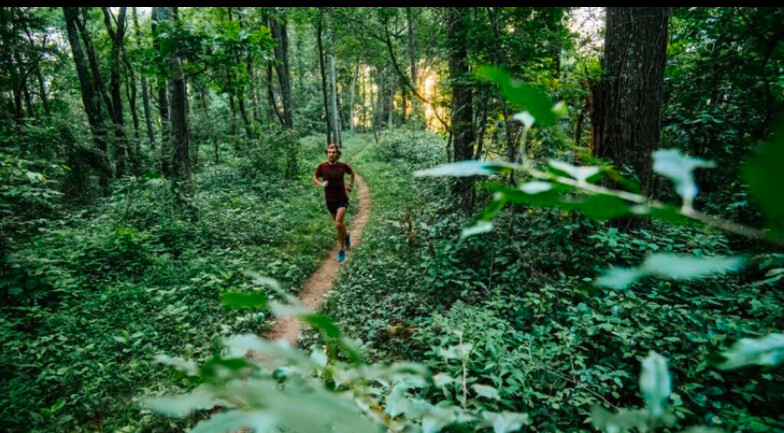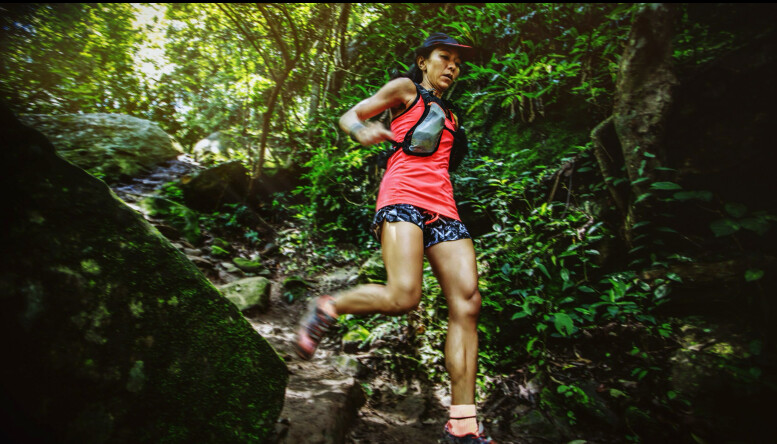Running News Daily
Running News Daily is edited by Bob Anderson. Send your news items to bob@mybestruns.com Advertising opportunities available. Train the Kenyan Way at KATA Kenya and Portugal owned and operated by Bob Anderson.
Index to Daily Posts · Sign Up For Updates · Run The World Feed
5 Tips for Leveling Up Your Trail Running
Five ways to measure your progress trail running across surfaces, distances, and routes
Many of us get into trail running because of its non-linear, anti-cookie cutter method of training. Sometimes it’s less about miles and times and more about focusing on where your feet—or hands if you’re scrabbling—are going.. However, that can also be the most frustrating aspect to accept, especially as we strive to improve. Unlike road running, where distances and times are easily measurable, trail running often lacks the same level of precision. But don’t worry, you can still assess and benchmark your progress. Here, we’ll explore various methods of how to track trail running progress that don’t require pinning on a race bib.


One of the simplest ways to measure progress, both in trail and road running, is by repeating looped routes regularly. Choose a trail that offers a mix of terrains, elevations, and technical challenges. By running the same loop consistently, you can monitor improvements in your pacing, endurance, and overall comfort level with the terrain. Take note of how you navigate tricky sections more confidently and efficiently over time.
Dana Katz, coach at UltraU Fitness, often prescribes what she calls a “money loop.”
“My athletes get to choose this for themselves,” Katz says. “This could be a Strava segment or local favorite and typically takes them one hour roughly, or five to eight miles. We revisit this every few weeks. It’s a great way for us to assess progress over time.”
Crafting a loop or two that you can use to benchmark your progress on a moderate-to-hard effort day can be a handy way to see how you’ve progressed over time. While Katz says you don’t need to be all-out to track results, her athletes get excited to see their heart rate and perceived effort level decline with training..
Similarly, one of my local favorite challenges is called “Golden Hell Week,” organized by local running group, Golden Mountain Runners, where runners test themselves on five routes over the course of a single week. While I don’t suggest doing back-to-back attempts at a fastest time, approaching these routes at different times throughout the year has been a great way to challenge myself in lieu of a tempo effort, and a sound method to see how I’m faring (if you ever find yourself in Golden, Colorado, I challenge you to the main loop around North Table Mountain).
Hills are a significant aspect of trail running, demanding strength and stamina. Designate specific hills or ascents on your favorite trail and incorporate them into your training routine. By regularly tackling these inclines, you can measure progress through increased speed, improved form, and enhanced cardiovascular endurance. Improving on hills is a clear indicator that your trail running skills are advancing. You can find a host of hill repeat training sessions from Coach David Roche’s 8 Favorite Hill Workouts.
Hills can be just as uncomplicated as running 400-meter intervals on the track. Simply put, select a hill near your house or on a favorite trail and run it several times fast. Rest, jog, and repeat. Note your time for each one, or run hard for a designated amount of time and note how far you made it up the hill. Hill repeats, money loops, and Strava segments (if you use that platform), can be useful strategies to assess progress within a shorter duration effort.
When switching from roads to trails, one of the hardest aspects to wrap our brains around is the concept of effort versus pace. To help gauge ourselves for the shift, Dee Stasullli, coach at Zeal Endurance Coaching, recommends incorporating practicing effort-based workouts and runs in your training. Craft “purposeful race plan, which involves switching from pace-based exercise prescription to effort-based,” Stasullli says. “I use a lot of the same prescriptors,like 10K effort or percentage of Lactate Threshold. It should feel hard but controlled and can translate to other variable conditions.”
You might start with a Lactate Threshold (LT) assessment, or a 5K to 10K race (or self-marked course) to find that sweet spot. From there, you’ll have a better gauge on what effort level corresponds to each pace and distance.“The more you can tune into how it feels at each effort level in your training, that can help you tune into the effort level needed for your race,” Stasullli says. While there are many factors that can influence our pace on the trails, effort is a gauge we can tap into regardless of the terrain, vertical gain, or other factors involved in the adventure.
Trail running is not just about speed; endurance plays a crucial role. As you progress, focus on increasing your “time on feet.” Gradually extend the duration of your trail runs, emphasizing steady pacing and consistent energy levels. This approach helps build endurance, allowing you to cover longer distances comfortably. Similarly, if you’re transitioning from running a certain number of miles a week on the roads to training on trails, consider how long you’re training per week by time, not just mileage. Road miles and trail miles are not created equally. Although you may not cover as much ground on the trails within the same timeframe, consider the amount of vertical feet you’re gaining and your overall effort level. Your body doesn’t know how far you run, it just knows how much stress it’s been under.
Heather Hart, coach at Hart Strength & Endurance Coaching, advises that athletes focus on training by time versus mileage “When I meet an athlete going from road to trail, we’re going to throw out pace suggestions and heart rate training,” she says. “Ask yourself: Are you getting a little further in an hour run this month versus last month? Overall, gauging how comfortable you feel on the trail and perceived exertion is a great start.”
While this training mindset isn’t easy to reframe, it can be empowering to ditch the watch or pace gauge to which you’re accustomed. If you’re unsure how long a loop on the trails might take you, start with out-and-backs or going up and down a hill, enjoying the negative split as you run down.
If you’ve been on trails throughout different regions,or even areas of town, you might realize how different paths can be depending on their location. Benchmark your progress by exploring trails over diverse surfaces. Transition between soft dirt, rocky paths, and hillier routes to challenge different muscle groups and improve overall adaptability. As you become more adept at handling various surfaces, you’ll notice enhanced stability and control during your runs.
For instance, if you want to improve your technical downhill running over loose scree, but you’re completely new to running over rocks, start with a handful of pebbles or crushed gravel. Focus on one segment of a pebble-filled trail you run often, practicing your technique and getting comfortable with the setup before introducing a new trail with obstacles you haven’t yet encountered, such as those big, burly rocks or loose scree found on big mountains. You might consider starting with a lesser-grade before moving onto steeper inclines and descents, especially when considering extra elements.
With unpredictable terrain and scenic routes, trails don’t always offer the straightforward metrics of road running, especially without races to gauge our improvement. However, by strategically incorporating looped routes, hill repeats, Strava segments, technical trail proficiency, time on feet, and variety in trail surfaces into your training regimen, you can effectively benchmark your progress.
These non-racing methods not only offer tangible ways to assess improvement but also contribute to the holistic and fulfilling experience of trail running. Because, afterall, metaphorically losing yourself on the trail is probably a big reason why you got into the sport in the first place. So, lace up your trail shoes, embrace the adventure, and, if you’re so inclined, check in with your progress every once in a while.
(04/28/2024) Views: 661 ⚡AMPby Outside Online
Login to leave a comment




